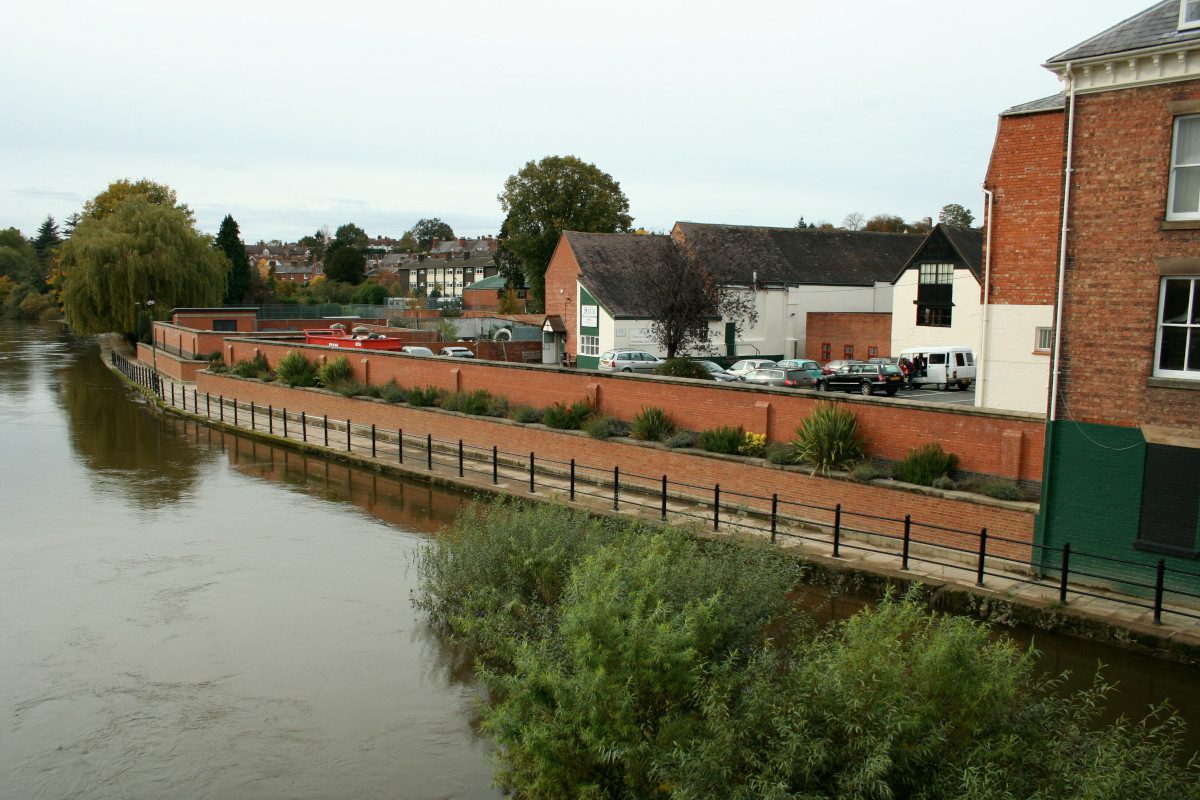
The Environment Agency (EA) has pledged to default to low-carbon concrete when constructing flood defences and other critical infrastructure projects, provided they meet performance requirements, in a new roadmap document.
The roadmap aims to demonstrate how the organisation will cut its carbon footprint by 45% by 2030. As well as the use of low-carbon concrete, this includes using energy-efficient pumps to help move water away from homes during floods, switching to only electric cars by 2023, and reducing the overall number of vehicles.
“With emissions from the supply chain accounting for a significant proportion of the Environment Agency’s current carbon footprint, contractors and suppliers will also be pushed to take action,” says a press release from the agency, “with large contracts including commitments to reduce carbon footprint year-on-year.”
“Where appropriate, staff will continue to receive support to work from home and reduce emissions from commuting. Flexible working arrangements during the pandemic have already reduced the Environment Agency’s emissions from business travel by 48% and emissions from buildings by 22%, against the previous financial year.”
An offsetting strategy is also apparently in development to address all remaining emissions. The strategy, due out by April 2022, will outline how the EA will work with key partners on projects to harmlessly lock away carbon while bringing added benefits to people and nature, such as reduced flood risk and improved habitats.
Sir James Bevan, Chief Executive of the Environment Agency, said:
“Reaching net zero will be one of the biggest challenges the Environment Agency has ever faced. It will require every single one of us to play our part, and to think and act differently.
“We will integrate net zero into every aspect of our work over the coming decade. By learning, sharing best practice and partnering with our suppliers, businesses and communities across the country, we will do everything we can to play our part in becoming a net zero nation and tackling the climate emergency that we all face”.
Emma Howard Boyd, Chair of the Environment Agency, said:
“In the flurry of net zero announcements recently, many have questioned how some organisations are going to reach future targets. This roadmap sets out credible short-term and long-term action to bring down emissions in our operations and supply chain.
“We can’t insulate our activities from the wider economy’s impact on the climate, which is why the Environment Agency’s work to help the country become more resilient to shocks like floods and heatwaves has never been more important.
“You can do both. We are working with businesses and Departments across government to create resilient infrastructure and reach net zero at the same time, with tools like low carbon concrete. As a global ambassador for COP26’s Race to Resilience, I aim to bring practical examples of this work to the attention of the world.”
Tom Brown, Jacobs CSF Framework Director and Chair of the Framework Directors’ Net Zero Group, said:
“It is clear just how passionate and committed the Environment Agency’s supplier partners are to delivering our work more sustainably, understanding the hugely significant part we play in helping the Environment Agency achieve its net zero ambitions together.
“Meeting this challenge will take many forms, including innovative low-carbon solutions, new ways of thinking and delivering to use less carbon in all that we do whilst delivering resilient flood risk management.“
More than half of the EA’s carbon emissions currently come from the construction of flood defences – and while the vital work to protect people and property from flooding will continue, there will also be an increasing focus on nature-based solutions that don’t require hard defences built from carbon-intensive concrete.
Low-carbon concrete has already been used by the EA to construct the recently completed Hythe Ranges sea defence, helping to cut more than 1,600 tonnes of emissions from the project’s footprint and now better protects nearly 800 properties from flooding. The works also saw the refurbishment and raising of 30 timber groynes and the recharging of the shingle beach with over 300,000 cubic metres of material.






